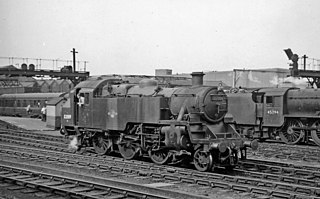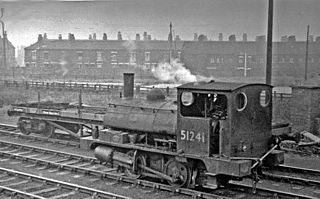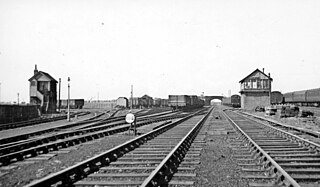C&WJR locomotives
All the nameplates used on this company's locomotives were named after residences of C&WJR company directors. Until recently there was uncertainty about the name of No. 2 but the personal notebook of the Company Accountant shows otherwise. The engine never ran in service with the name Ennerdale.
- No. 1 Brigham Hill (1st) and Rothersyke (1st)
An outside cylinder 0-4-0T Built in 1894 by Fletcher Jennings Ltd for C&WJR. Builders No. 187.
Nameplates carried:Brigham Hill (1882–1894) and Rothersyke (1894–1897)
Renumbered: No known renumbering of this engine.
Disposal: To West Stanley Colliery Coy. County Durham in 1897 [15]
- No. 2 Unnamed for fifteen years, then Rothersyke (2nd)
An outside cylinder 0-4-0ST. Built circa 1875 by Barclay & Co. (not an Andrew Barclay Sons & Co. product). Built originally for Ward, Ross & Liddlelow, railway contractors to the C&WJR, No. 2 was purchased second hand in 1882. No. 2 was originally named Ennerdale but the nameplates were removed after acquisition by the C&WJR on the order of the Managing Director.
Nameplates Carried: None from 1882 to 1897. The redundant plates from engine No.1 Rothersyke were fitted when it was decided to sell the engine.
Renumbered: No known renumbering of this engine.
Disposal: To SD Coasdell of Workington in July 1898 for £150. [15] [16]
An outside cylinder 0-6-0ST of 1884, built by Robert Stephenson and Company for the C&WJR. Builders No. 2553. The saddle tank did not cover the smokebox.
Nameplates carried:South Lodge. (1884 to 1920)
Renumbered: No known renumbering of this engine.
Disposal: To J.F. Wake Ltd., Dealers, Darlington, County Durham, July 1920 [15]
An outside cylinder 0-6-0ST built in 1885 by the Lowca Engineering Co. Ltd. for the C&WJR. Builders No. 196. Similar in appearance to No. 3 and the saddle tank did not cover the smokebox.
Nameplates carried:Harecroft (1885 to 1915)
Renumbered: After disposal by new owner to 46
Disposal: Withdrawn September 1915 and sold to Workington Iron & Steel Company. [15]
An outside cylinder 0-6-0ST built in 1890 by Robert Stephenson and Company for the C&WJR. Builders No. 2692. The saddle tank did not cover the smokebox.
Nameplates carried: Moresby Hall (1890 to 1919)
Renumbered: No known renumbering of this engine.
Disposal: Withdrawn and scrapped 1919. [15]
An outside cylinder 0-6-0ST built in 1894 by Robert Stephenson and Company for the C&WJR. Builders No. 2813. The saddle tank did not cover the smokebox.
Nameplates carried: Brigham Hall (1894 to 1920)
Renumbered: Allocated 11564 by the LMS in 1923 after the grouping, but not known if it was repainted into LMS colours.
Disposal: Withdrawn 11/12/1926 and scrapped by the LM&SR [15]
An outside cylinder 0-6-0ST built in 1896 by Robert Stephenson and Company for the C&WJR. Builders No. 2846. The saddle tank did not cover the smokebox.
Nameplates carried:Ponsonby Hall (1886 to 1926)
Renumbered: Allocated 11565 by the LMS in 1923 after the grouping, but not known if it was repainted into LMS colours.
Disposal: Withdrawn 18/12/1926 and scrapped by the LM&SR [15]
An 0-6-0ST built in 1907 by Peckett and Sons for the C&WJR. Builders No. 1134.
Nameplates carried:Hutton Hall (1907 to 1927)
Renumbered: Allocated 11566 by the LMS in 1923 after the grouping, and repainted into early LMS black goods livery.
Disposal: Withdrawn 3/12/1927 and scrapped by the LM&SR [15]
An outside cylinder 0-6-0ST built in 1919 by Peckett and Sons for the C&WJR. Builders No. 1340.
Nameplates carried:Millgrove (1919 to 1928)
Renumbered: Allocated 11567 by the LMS in 1923 after the grouping, and repainted into early LMS black goods livery.
Disposal: Withdrawn 5/12/1928 and scrapped by the LM&SR [15]
An outside cylinder 0-6-0ST built in 1920 by Hudswell Clarke & Co. for the C&WJR. Builders No. 1400.
Nameplates carried:Skiddaw Lodge (1920 to 1932)
Renumbered: Allocated 11568 by the LMS in 1923 after the grouping, and repainted into early LMS black goods livery.
Disposal: Withdrawn 1932 by LM&SR and sold to Hartley main Collieries Northumberland, via Robert frazer & Sons Ltd., Hebburn, County Durham. [15]












